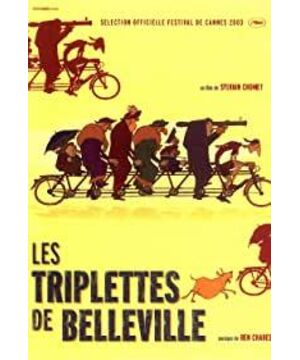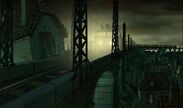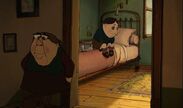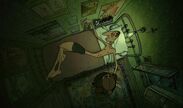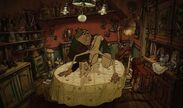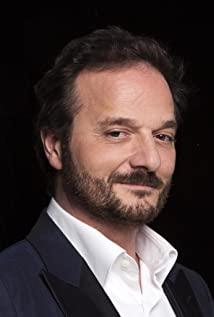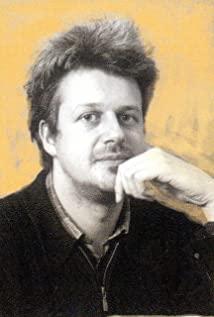Director Sylvain Chomet is really bold, dare to use such extreme performance methods, and impressive in terms of soundtrack. However, "Beauty City Trio" still can't get rid of Disney's shadow in its bones-that is, it still has a happy ending (I don't object to this) and humorous elements, and it still has the connotation superficial. Last time I watched it, I felt that the expression of "Beauty City Trio" was really extraordinary, but I compared it with Otomo Katsuhiro's work. It was really my mistake. After all, Western cartoons still don't pay attention to the expression of ideas. There is really no way to do this.
It is undeniable that Sylvain Chomet’s ability to make such an animation is indeed worth mentioning, and it also includes a lot of personal style things, and some things that make people smile, and some small details are really original. It is worth studying. Moreover, it is a mime-style film, which is rare in recent years, and it is indeed a rare masterpiece. But at the end of the reading, I feel that the director's thinking is limited: maybe he satirized American society and the process of industrialization, but this is not an ideological one, but for the enjoyment of the audience. He himself also mentioned in the interview that he wanted to make a Disney-style film, but he didn't want to make a Disney-style expression. I feel that he himself didn't realize much, but was pursuing perfect expression (this is indeed a very good job, absolutely superb), and the plot is also a bit thin. For me, who always want to find the feeling of being moved deep in my heart, this film is still not enough.
Regarding the expression method:
In terms of expression, this film is exemplary. Two-dimensional hand-painting, three-dimensional connection, music collocation, picture color, character modeling, silent shaping of character personality, humorous plot, foreshadowing before and after, and the proficient use of lens (sub-mirror) are indeed commendable. Among them, the description of the city (drawing from the top down, and then back to the top view to show the magnificence), the description of the game (multiple events at the same time and switching) are all classics. Of course, when it comes to city descriptions, the urban structure in "Metropolis" (released in 2001; original: Osamu Tezuka; director: Rintaro; script: Katsuhiro Otomo) is the most classic. But "City of Belle", as a 2D animation that accounts for the majority, is also very good. And obviously the "fat version of the Statue of Liberty" (very uniform with the female characters in the film, which is also a good place in the film, that is, the unity of the small place is not overlooked) "Hollyfood", but I think it is more Many people are still laughing. In terms of character description, it is also extremely classic-it is difficult to describe characters purely with behavior without or seldom using language, but "Beauty City Trio" does an excellent job-such as the protagonist "Champion" from the beginning Only one sentence has been said since the end, and it was at the end of the film. But his tenacity, his hard work, and his persistence have undoubtedly moved many people. The image of the grandmother is also very full-for the grandson. Even the character of the old dog named "Bruno" can't be concealed from our eyes-in order to revenge for being run over by the toy train when he was a child, he barked when he met the train all his life (but the Mirador train has stopped him from barking. Strengthened...). Sylvain Chomet said in the interview that he likes Chaplin's movies very much, and he has undoubtedly learned a lot of Chaplin's expressions here.
About music:
The film is also excellent in the handling and use of music. Sylvain Chomet uses a lot of classical music. At the beginning, some pianists talked about Bach’s equal temperament. Cross-sea is using Mozart’s C minor or something. Mass music, requiem, etc., but I almost admired the ability of the dead music supervisor; when I came to the interview, I learned that it was Mozart...). It's not just these that are very impressive, the soundtracks at other times are also great, very in line with the environment (and very strange...). For example, a nightclub-do you use newspapers, refrigerators, vacuum cleaners, and bicycle rims? And the scene where my grandmother played the steel ring at night, she actually played Bach's balance law, which is not unique (she played the piano but it was a mess)...So, there are a lot of places to know how to smile. . The main reason is that the scene and music are extremely appropriate and hard to come by.
About thought:
Someone commented that the film promoted the disadvantages of industrialization, which was purely out of nothing; I am more inclined to criticize American culture, but the evidence still seems insufficient. Just relying on the description of the gangsters is different from Hollywood, and the large amount of black humor about violence is not enough to explain the problem. If the author thinks that American society is like this, then I feel that it is narrowly understood. Exaggerated film techniques do not always contain thoughts, and I don't think there are too many problems explained here. In general, the main aspect of this animation is still to satisfy the audience's psychology, not to express one's own thoughts. Maybe something has something to do with Sylvain Chomet's personal thoughts, but I think it is still to cater to the audience's psychology. : Take the surgery with the Statue of Liberty, the crazy style of the gangsters, the very fat women, Bruno barking at the train, etc., maybe not to show something, but to make the audience find it interesting, nothing more. Maybe Sylvain Chomet just had an idea, a whim, and did so. Although this can reflect his impression of certain societies, this depth cannot trigger thinking, let alone any thoughts about the "disadvantages of industrialization". As for the "sarcasm of American society" (I believe that this point exists for the time being, although Sylvain Chomet did not touch on this topic at all in the interview), it may be more reasonable to explain that in order to attract the audience with black humor-I think Sylvain Chome did not think about it. So much. What he thought might be: "It's nice to please the audience again and take this opportunity to vent your anger..."
But I still admire this cartoon, which incorporates a French humorous style, excellent The use of expressiveness and description, and there is no narrow national concept and atmosphere, it is really a rare masterpiece of Western cartoons. It is absolutely natural to be nominated for Oscar Best Animated Feature and Best Original Song.
other:
Regarding the piano music at the beginning: I suspected that it was based on Glenn Gloud as soon as I heard the piano sound. The action of playing the piano is very similar, and Gloud only sits on his own bench instead of on the piano stool. And the playing style of that equal temperament is obviously Glood's style. I am really familiar with his style and the piano tone he uses. Gloud is one of my two most admired pianists. And when it comes to Bach’s piano music, there are very few that can surpass Glenn Gloud. In addition, he is a Canadian pianist (this film is a joint production of France, Canada, and Belgium), so it is reasonable to use him as the original form. As it should be. I immediately found out my precious Glenn Gloud average temperament (a set in The Glenn Gloud Edition published by Sony Classical in 1992 to commemorate the tenth anniversary of Gloud's death), and found this song "Perlude And Fugue No.2 In C minor, BMV847" (Prelude and Fugue No. 2 in C minor, Bach Op. No. 847). It's exactly the same...I'm moved...Let's listen, that's Bach, that's Glood, that's nature! ! Highly recommended: Glenn Gloud's Goldberg Variations (Sony Classical 81 years edition, Samsung with flowers), that is his masterpiece of surpassing himself! ! He became famous in Goldberg Variations (in 1955, the song he played made him famous), and ended in Goldberg Variations (the 1981 version was recorded a year before his death, and it was a DDD recording!), he reflected on his life. , Incorporating deeper thinking into the 81st edition. That is the master's "Swan Song"!
About frogs: It was mentioned in the interview that Sylvain Chomet was very surprised about some things the French eat (referring to snails...), so he added frogs to the film...
View more about The Triplets of Belleville reviews


